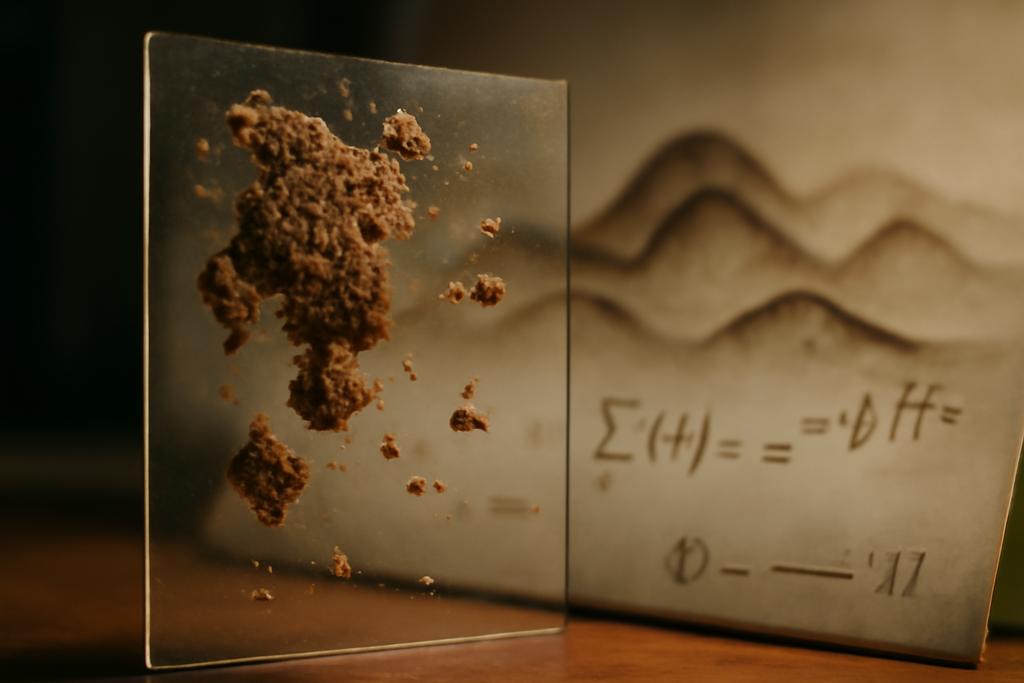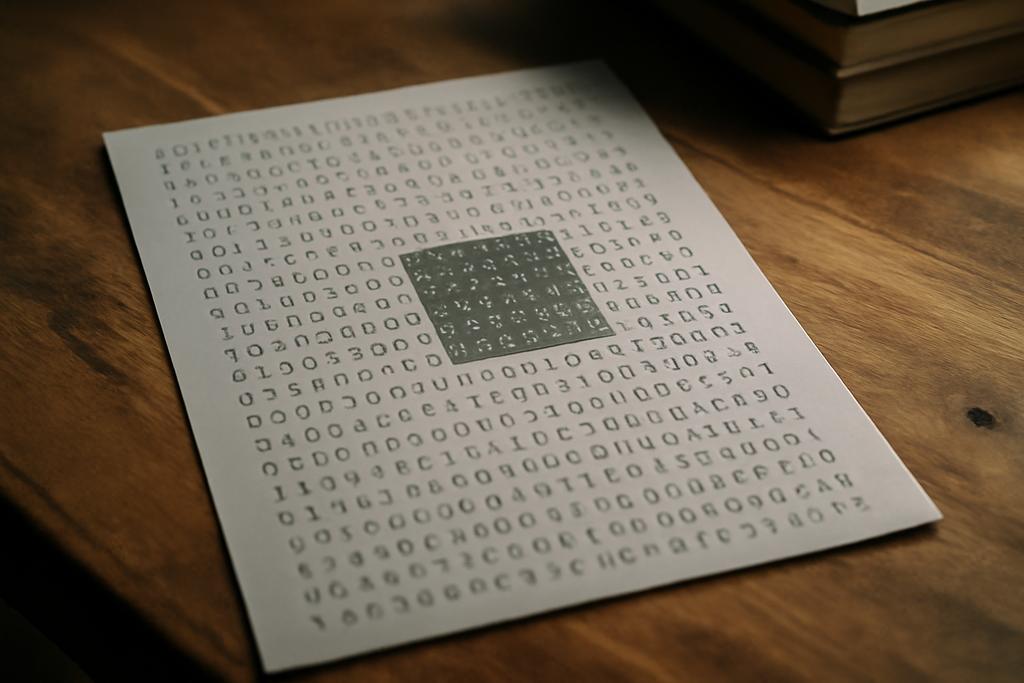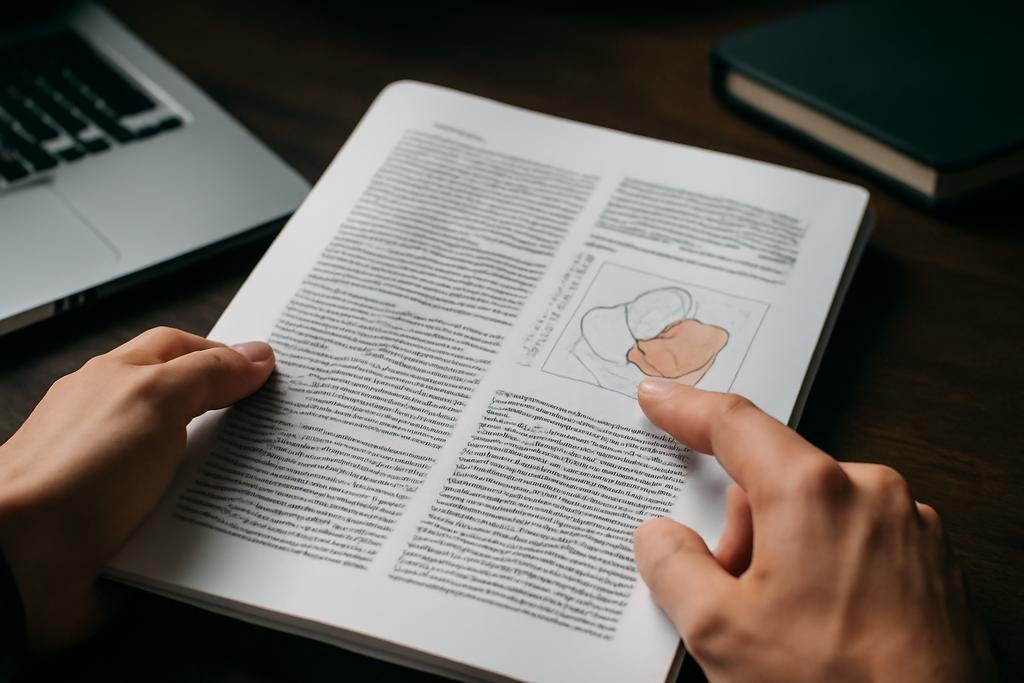The quantum world has a way of hiding simple rules inside tangled patterns. In a recent study from the Department of Physics and Astronomy at the University of California, Irvine, researchers show how hidden symmetries in a crystal can cradle intricate topological structures in the magnetic excitations of a real material. The paper, led by Charles B. Walker, Matthew Stern, and Judit Romhányi, dives into XCuCl3 (with X equal to Tl or K) and reveals that the so‑called triplet excitations form symmetry‑enforced line nodes that are robust against many microscopic details. It’s a story about how geometry, spin, and field can conspire to create and then gently lift a delicate pattern in momentum space.
In common language, the researchers are asking: how can the spectrum of collective spin flips in a dimerized quantum magnet organize itself so that whole lines in momentum space stay degenerate, protected by the crystal’s symmetry? And what happens when you nudge the system with a magnetic field that tilts away from the crystal’s high‑symmetry direction? The answers connect deep mathematics—topology and symmetry—to tangible properties like how energy gaps open and how, in some cases, the bands act like tiny, quantum mechanical gears with their own intrinsic “knots.” This is not just abstract theory: it points toward measurable consequences in real materials and may guide how we think about magnetic transport and spin dynamics in quantum magnets.
What makes this study stand out is that it bases its conclusions on a concrete, imperfect crystal rather than an idealized model. The team carefully accounts for all symmetry‑allowed anisotropies in the spin interactions, the full g‑tensor that describes how spins respond to magnetic fields, and the subtle ways dimers couple to each other. They show that the line nodes in the triplet spectrum persist because of nonsymmorphic symmetries—glide planes and screw axes built into the crystal. In other words, the lattice itself protects these features, much like a backstage pass that ensures a show won’t be canceled by minor changes in the lighting or the acoustics. And when the field is tilted, those protective symmetries can be broken, leading to a rich evolution from nodal lines to Chern bands with quantized topological character.
So where does this come from, and why should we care? The approach combines a traditional bond‑operator view of quantum magnets with an effective Dirac‑like description of the low‑energy triplet subspaces. The result is a clean, analytic handle on how topology arises in a real, anisotropic, interacting system. It’s a bridge from the clean world of Dirac and Berry phases to the messy world of actual crystals that host triplet excitations. That bridge is what makes the finding both robust and surprisingly tangible: a topology that survives real‑world complications, and a controlled way to tune it with magnetic fields. It’s the kind of insight that might inform future experiments on quantum magnets and, more broadly, on how to engineer topological states in solid materials.
Unpacking the triplet topology
To start, imagine a crystal built from dimers—pairs of copper spins bound together in a singlet ground state. In TlCuCl3 and KCuCl3, these dimers sit on a monoclinic lattice that is fairly shy about symmetry: it doesn’t have the kind of high symmetry you’d see in a cubic crystal, yet it hides a powerful structure in its nonsymmorphic elements. Those elements—glide planes and screw axes—mean that certain operations combine a mirror or rotation with a fractional translation. The upshot is that some excitations, the triplets, can be forced to remain degenerate along whole lines in momentum space, not just at isolated points.
The authors treat the system with a fully anisotropic spin Hamiltonian that respects the lattice’s nonsymmorphic symmetries. They don’t merely assume an isotropic spin game; they account for all symmetry‑allowed anisotropies in the interdimer bonds and along the various exchange pathways. They also incorporate the g‑tensor with its nine potential components, which is crucial for predicting how a magnetic field tilts the triplet spectrum. When all the dust settles, the triplet bands split in a way that preserves line degeneracies along specific momentum planes. Those line nodes come with a geometric phase—a Berry phase of π when you loop around the line—signaling a genuine topological character rather than a harmless quirk of the spectrum.
In practical terms, the model shows two families of nodal lines in the Brillouin zone, each protected by a different combination of symmetry and spin orientation. The result is not mere curiosity: these lines are associated with a nontrivial topology measured by a Z2 index, a kind of binary topological fingerprint that can indicate robust, intrinsic properties of the excitation spectrum. The pair of nodal lines act like two intertwined highways for triplet quasiparticles, where crossing points would otherwise be avoided by symmetry are instead stabilized by the crystal’s glide and screw symmetries. All of this is anchored in real materials, not just a theoretical construct, which makes the result especially compelling for experimentalists seeking to observe topological excitations directly in magnets.
Symmetry as the backstage pass
What’s especially striking is how the nonsymmorphic symmetries literally shape the band structure. The glide plane and screw axis enforce degeneracies that would be fragile in a simpler lattice. The authors show that these degeneracies are robust in the presence of many kinds of anisotropy, as long as the ground state remains a dimer singlet and the symmetry group isn’t broken. It’s as if the crystal carries a built‑in “inertia” against tiny perturbations, ensuring the triplet lines survive despite the material’s inevitable imperfections.
The analysis here hinges on teasing out the meaningful terms in the spin Hamiltonian. They separate out the isotropic exchange parts from the anisotropic pieces and then see how these pieces modify the six triplet modes (two dimers, three spin projections). The key observation is that certain off‑diagonal exchange anisotropies and a particular component of the Dzyaloshinskii–Moriya interaction on the bonds that connect different dimers do the heavy lifting in lifting spin subspace mixing. Yet the nodal lines themselves stay intact because the symmetry constraints force the triplets to remain degenerate along those lines. The math gets intricate, but the physical picture is elegant: geometry protects a delicate band structure, even as the system is nudged by microscopic details.
Even more interestingly, the field enters as a careful sculptor. With the magnetic field aligned along the high‑symmetry axis (010), the nodal lines persist. Tilt the field away, and the protection weakens. The field tilting acts like a knob that gradually breaks the nonsymmorphic guardians, opening a mass gap at the nodes. That gap is where topology can either remain trivial or take on a nontrivial character, depending on the competition between different mass terms. It’s a vivid demonstration of how a single experimental control—field direction—can steer the system from a line of degeneracies to a landscape with Chern bands and quantized Berry curvature in momentum space.
Nodal lines become Chern bands under tilt
The most striking consequence of tilting the field is not merely gapping the lines, but shaping the nature of the resulting gaps. If the mass term added by the field is uniform across the Brillouin zone, the resulting gap is topologically trivial and does not endow the bands with a net Chern number. This would be a clean, conventional insulator‑like gap without exotic edge phenomena. But the theory shows a deeper possibility: when exchange anisotropies and the off‑diagonal elements of the g‑tensor cooperate in just the right way, the mass term can develop momentum dependence that threads the Brillouin zone with skyrmion‑like texture. In such a situation, the bands acquire nonzero Chern numbers, and the system supports chiral edge modes in appropriate geometries—a magnonic analog of the quantum Hall effect for triplet excitations.
To demonstrate this, the authors derive an effective two‑level (Dirac) Hamiltonian for each spin projection, carefully separating the triplet subspaces with a perturbative transformation. The resulting dm(k) vector—whose components encode the momentum‑dependent “pseudo‑magnetic field” felt by the triplets—acts as the engine of topology. In the tilted field, dz is no longer vanishing; it becomes finite and, crucially, can vary with momentum in a way that yields nonzero skyrmion density in certain planes of the Brillouin zone. That skyrmion density is precisely what feeds the Chern numbers. They verify these predictions by calculating Berry curvatures directly from the two‑level model and cross‑checking with the full 12×12 BdG Hamiltonian. The consistency is striking: the simplified picture captures the essential physics, while the full calculation confirms its reliability in a real‑world setting.
What does a nonzero Chern number mean for a magnetic crystal? It signals robust, topologically protected features in the excitation spectrum that cannot easily vanish without a fundamental change in the system’s symmetry or mass terms. In practice, this translates to edge states in finite samples and quantized transport signatures that, while challenging to measure in magnets, are well within the conceptual reach of modern neutron scattering and thermal transport experiments. The paper even notes how these ideas connect to broader questions about the thermal Hall effect and spin Nernst response in topological magnon systems, situating XCuCl3 as a concrete platform to study these ideas beyond idealized models.
From a mathematical model to physical observables
One elegant thread through the work is the translation from a high‑level topological story to concrete, testable predictions. The authors start with an array of symmetry‑allowed terms—exchange anisotropies, DM interactions, and a fully anisotropic g‑tensor—and distill them into an effective picture that captures the essential topology. They proceed in two parallel tracks: an analytic, low‑energy Dirac model that makes topological indices computable, and a numerical treatment of the full bond‑wave/BdG Hamiltonian that tests those indices against the complete spectrum. The upshot is a coherent narrative where topology isn’t a rumor in a distant dimensionless theory, but a tangible property of a material that real scientists can probe with available techniques.
The paper makes the role of symmetry precise. Nonsymmorphic elements protect the line nodes in the triplet spectrum, even when many microscopic details are varied. Tilting the field breaks those symmetries, but the fate of the system—whether the resulting gap is trivial or nontrivial in topology—depends on the precise balance between different anisotropy channels. This balance is not a mere technicality; it is the lever by which the material could, in principle, transition between phases with and without edge modes in the triplet sector. The authors emphasize that while nodal lines themselves are a robust feature, their surface manifestations (edge modes) are nuanced and depend on the broader arrangement of masses across the Brillouin zone. In short, the work shows how a crystal’s geometry, its spin interactions, and an external field conspire to orchestrate a topological fate that must be read from the whole band structure, not from any single feature in isolation.
So what should experimentalists take away? First, in XCuCl3, triplet nodal lines are a real, symmetry‑enforced phenomenon, not an artifact of an idealized lattice. Second, by tilting the magnetic field, one can tune the system through a family of topological regimes. The mass terms that appear when symmetry is broken can either create a trivial gap or a migratory, momentum‑dependent mass that yields Chern bands. This translates into specific expectations for Berry curvature distributions in momentum space and, in principle, measurable signatures in thermal transport or in inelastic neutron scattering probes sensitive to the Berry phase structure of the bands. The work thus provides a roadmap for experimentally chasing topological triplons in a material that already sits on the cusp of magnetic quantum phenomena such as Bose–Einstein condensation of triplets and field‑induced polarization effects.
Why this matters and what’s next
Beyond the specifics of XCuCl3, this study sharpens a general lesson: symmetry can do more than dictate what is allowed or forbidden. In quantum magnets, it can actively sculpt the topology of collective excitations. Nonsymmorphic symmetries—those playful combinations of symmetry and translation—emerge as powerful guardians, capable of protecting line nodes that resist a surprising range of microscopic changes. The finding that a tilt of the magnetic field can either erase these lines or morph them into Chern bands highlights a new form of control in quantum magnets—topology on demand, powered by geometry and a carefully oriented field.
From a broader perspective, the work sits at an intriguing crossroads of theory and experiment. It builds on decades of discovery in topological band theory, magnonics, and spin‑gap magnets, while providing a concrete, testable platform for exploring how triplet excitations can realize nontrivial topology. The authors also connect to ongoing debates about the thermal Hall and spin Nernst effects in quantum magnets, offering a framework that could reconcile puzzling experimental results with a richer topological landscape. If we think of topological phases as roads rather than destinations, this paper lays down new lanes—lanes that are not just about electrons zipping through a crystal, but about collective spin textures that can carry their own kind of topological traffic.
Finally, the institutional backbone matters. The study comes from the University of California, Irvine, with a team led by Charles B. Walker, Matthew Stern, and Judit Romhányi. Their careful treatment—balancing a detailed, symmetry‑aware spin Hamiltonian with a tractable effective model—offers a blueprint for how to approach similar questions in other dimerized magnets that share structural motifs with XCuCl3. The work invites experimentalists to probe triplet spectra with a new lens and suggests a broader program: search for symmetry‑protected nodal lines in other monoclinic, nonsymmorphic magnets, and explore how tilt‑induced gaps could reveal new kinds of topological edge physics in spin systems.
In the grand arc of condensed matter physics, this paper is a reminder that topology is not a solitary guest at the table of materials science. It travels with symmetry, with the lattice, and with the experimental knob of a magnetic field. When these ingredients align, we glimpse a world where magnetic excitations carry their own stubborn, measurable history—nodding along lines in momentum space that immune the system to many perturbations, and then, with a careful tilt of the field, reveal a hidden surface that knows how to conduct its own kind of edge current. For readers and researchers who love the idea that geometry and quantum mechanics can choreograph something as tactile as a band structure, this work offers both a vivid narrative and a practical toolkit for chasing topology in real magnets.










